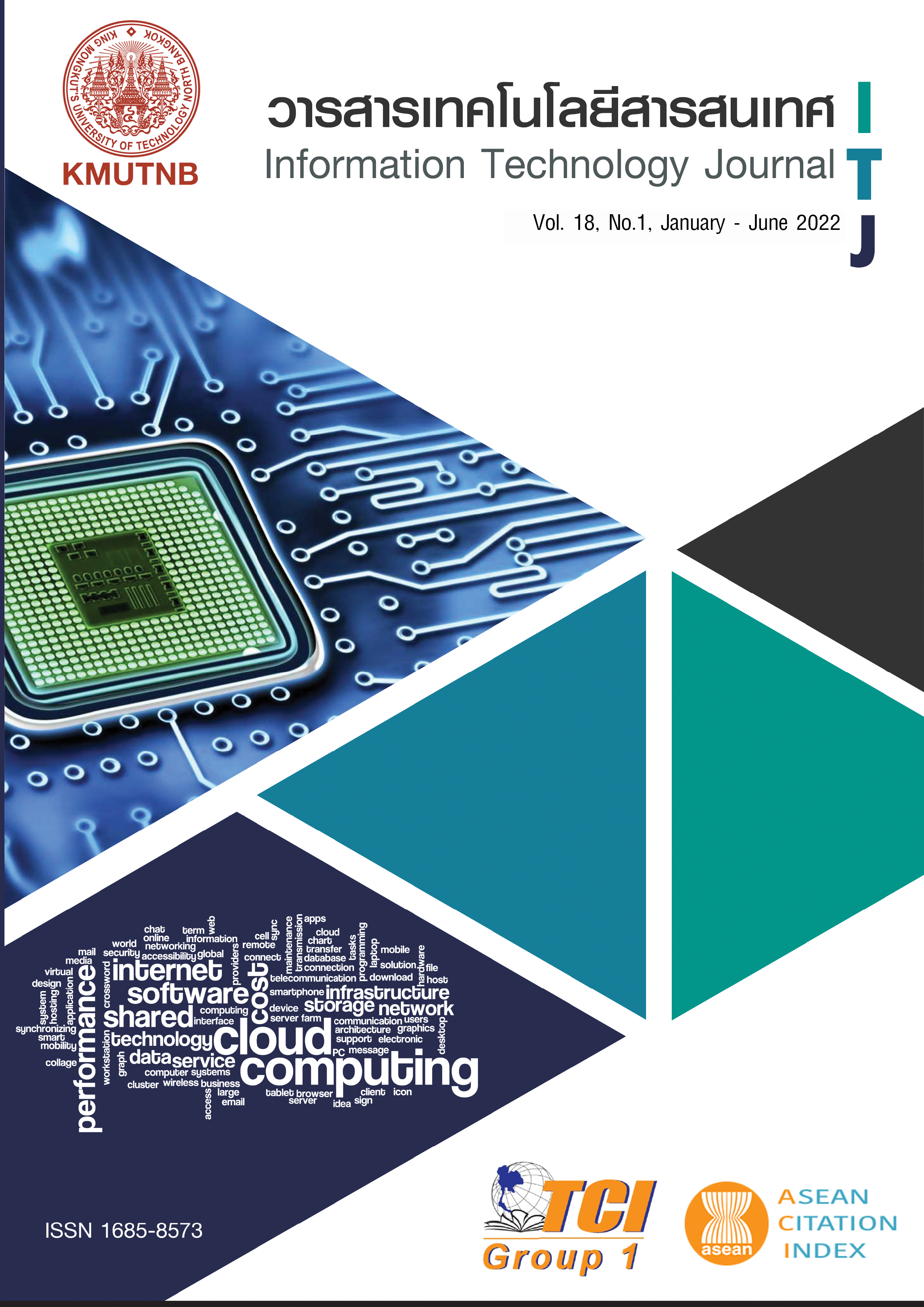A Predictive Model of User Experience M-Learning based on Learning Style
Main Article Content
Abstract
Each M-Learning media type will give a unique user experience (UX). As each individual learner has a different learning style, good selection of M-learning type will build academic achievement. We thus apply UX principles in designing of M-learning to improve suitability. It is called LS-based MLUX ( Learning Style based Mobile Learning User Experience). However, selection of suitable LS-based MLUX for the learner traditionally needs testing to determine the learner’s type, then M-learning types are introduced to the learner to try out and measure their learning achievement. This process usually is complex and time-consuming, so we focus on reduction of process in LS-based MLUX finding while maintaining efficiency using factor analysis to build new components and develop a prediction model using decision tree classifier techniques to reduce LS-based MLUX selection time. High accuracy found during tests show that this prediction model can effectively recommend LS-based MLUX for the learner. Which can measure the accuracy of 94.45% which is considered to be highly accurate.
Article Details

This work is licensed under a Creative Commons Attribution-NonCommercial-NoDerivatives 4.0 International License.
References
National Statistical Office, 2561Summary of important results Explore the use of information technology and Communication (2018). Available Online at http://stiic.sti.or.th/stat/ind-it/it-t012/
S. Graf, S.R. Viola, Kinshuk, and T. Leo. “Repesentative Characteristic of Feldersilverman Learning Styles: An Empirical Model.” the Austrian Federal Ministry for Education, Science, and Culture, and the European Social Fund (ESF) under grant 31.963/46-VII/9/2002., 2002.
Amir Dirin. From Usability to User Experience in Mobile Learning Applications, Aalto University publication series. Docterate Dissertation 255/2016, December 2016.
S. Graf, S. Rita Viola, T. Leo, and Kinshuk. “In-Depth Analysis of the Felder- Silverman Learning Style Dimensions.” Journal of Research on Technology in Education, Vol. 40, No. 1, 79–93, 2007.
M. M. El-Bishouty, A. Aldraiweesh, U. Alturki, R.Tortorella, J. Y.T.-W. Chang, S. Graf, and Kinshuk, “Use of Felder and Silverman learning style model for online course design.” Educational Technology Research and Development, Vol. 67, pp. 161–177, 2019.
A. Nimkoompai, and W. Paireekreng, “Dynamic UX Based M-learning using User Profile of Learning Style.” Proceedings of the 3rd International Conference on Communication and Information Processing, Japan, pp. 221–225, November 2017.
K. Vanichbuncha. Statistical analysis: statistics For administration and research. 14th edition Bangkok, Department of Statistics, Faculty of Commerce and Accounting, Chulalongkorn University, 2013.
T. Pinyo. Techniques for interpretation of analysis results Composition for research. 10th edition, Special issue, July 2018.
C. Kaew Chinporn, Decision tree classification techniques and grouping, Bachelor of Science Degree. Bangkok: Institute of Technology King Mongkut's Institute of Technology Ladkrabang, 2010.
E. Pacharawongsakda, Ph.D. Data analysis with basic data mining techniques. 1st edition, Asia Digital Printing Company Limited, August 2014.
B. Hmedna, A. E. Mezouary, and O. Baz. A predictive model for the identification of learning styles in MOOC environments. Springer Science+Business Media, LLC, part of Springer Nature 2019, September 2019.
P. Phetboonmee, D. Phon Nak, and M. Thianthong, "Modeling prediction based on Copeland's experience using decision tree Classification techniques." Journal Science and Technology, 21st, Issue 6 (Issue Special), 2013.
R. R. Kabra, Ahmednagar, and R. S. Bichkar. “Performance Prediction of Engineering Students using Decision Trees.” International Journal of Computer Applications (0975 – 8887), Vol. 36, No.11, December 2011.


